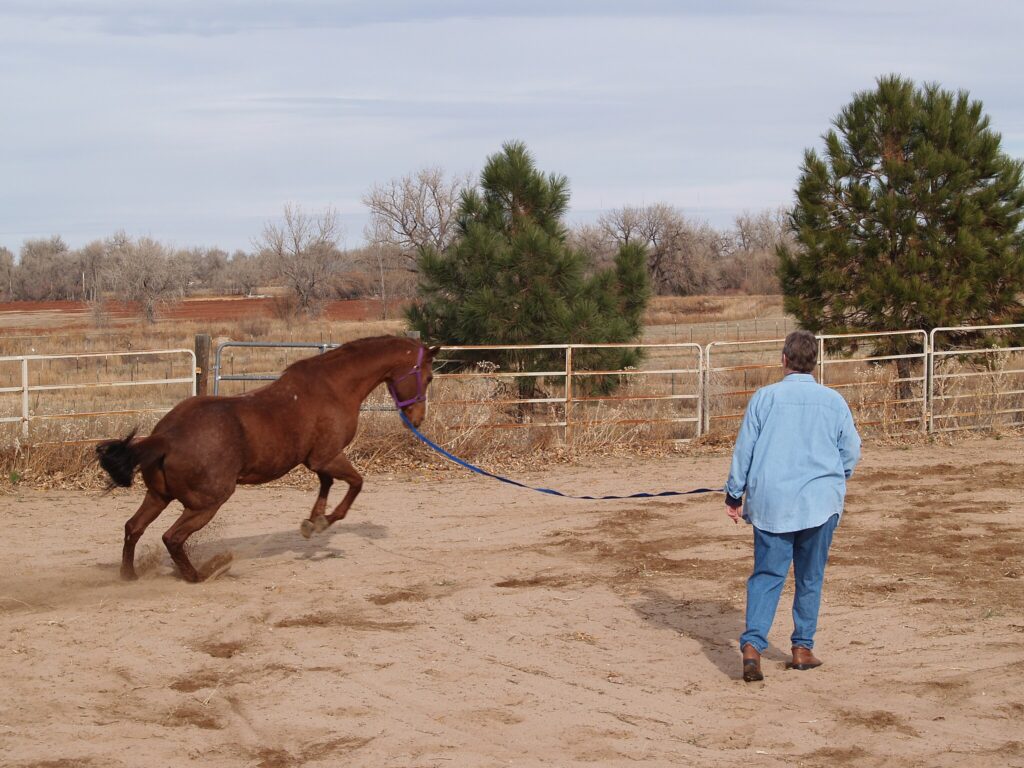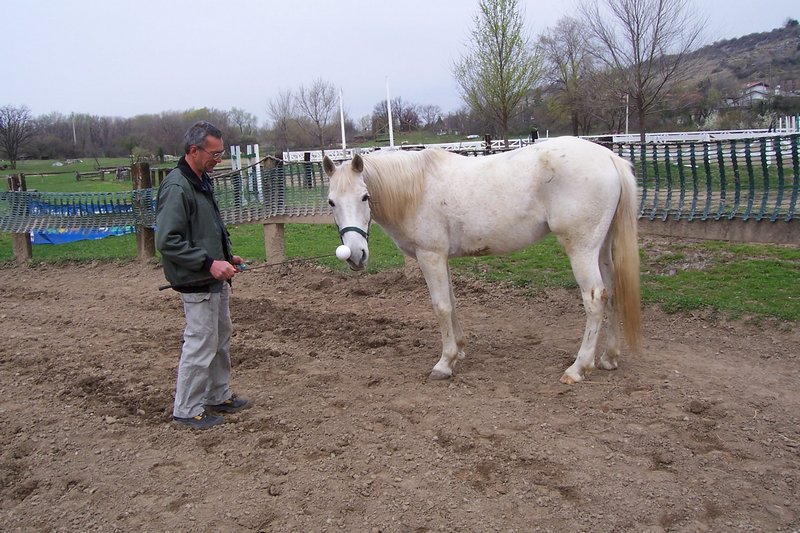Horses are highly intelligent animals with remarkable capabilities that extend far beyond carrying riders or pulling carts. With proper training, patience, and consistent practice, horses can learn to perform complex tasks like opening gates or moving objects. This specialized training not only provides mental stimulation for your equine companion but also serves practical purposes around the farm or stable. Whether you’re looking to train your horse for convenience, competition, or simply to strengthen your bond, teaching them to manipulate objects can be a rewarding journey for both horse and handler.
Understanding Equine Learning Capabilities

Horses possess cognitive abilities that allow them to learn through association, repetition, and positive reinforcement. Studies have shown that horses can understand cause and effect relationships, which is the fundamental concept behind teaching them to open gates or move objects. They have excellent memories and can retain learned behaviors for years, even if the skill isn’t practiced regularly. Additionally, horses are naturally curious animals who enjoy solving problems when the experience is positive and rewarding. Understanding these natural learning capabilities provides the foundation for successfully teaching your horse complex manipulative tasks.
Establishing the Right Training Environment

Creating an optimal training environment is crucial before attempting to teach your horse any new skill. Choose a quiet, familiar area with minimal distractions where your horse feels comfortable and secure. Ensure the training space has appropriate footing and is free from hazards that could cause injury or fear. The ideal training environment should be consistent—using the same location until the behavior is well-established helps your horse focus on learning rather than adjusting to new surroundings. Always begin training sessions when your horse is in a calm, receptive state, as anxiety or excessive energy can interfere with their ability to concentrate and learn effectively.
Building a Foundation of Basic Commands

Before tackling complex behaviors like opening gates, your horse should have a solid foundation of basic obedience. Your horse should reliably respond to commands such as walk, halt, back up, and move sideways on cue. These fundamental skills give you the necessary control and communication framework to build upon. Teaching your horse to target objects with their nose or hoof is another essential prerequisite that will directly translate to manipulating gates and objects. Spend time reinforcing these basics until they become second nature, as rushing into advanced training without this foundation often leads to confusion and frustration for both horse and handler.
Selecting Appropriate Positive Reinforcement

Positive reinforcement is the cornerstone of teaching horses to perform complex tasks like opening gates. Identify rewards that motivate your specific horse—while many respond well to food treats like apple pieces or carrots, others might prefer scratches in their favorite spot or verbal praise. The timing of reinforcement is critical; the reward must come immediately after the desired behavior to create a clear association in the horse’s mind. Start with continuous reinforcement (rewarding every correct response) during the learning phase, then gradually transition to intermittent reinforcement as the behavior becomes established. This approach keeps your horse motivated without creating dependence on treats for every action.
Introducing Clicker Training for Precision

Clicker training offers a precise method for marking the exact moment your horse performs the desired behavior correctly. The distinct sound of the clicker serves as a bridge between the behavior and the reward, allowing for perfect timing even when you can’t deliver the treat immediately. Begin by conditioning your horse to associate the click sound with a reward, clicking and immediately treating until this connection is firmly established. Once your horse understands this association, use the clicker to mark moments when they interact with the target object correctly, even in small increments. This precision allows you to shape complex behaviors like gate opening by rewarding successive approximations toward the final goal.
Teaching Basic Targeting Skills

Targeting forms the foundation for teaching your horse to manipulate objects and is relatively simple to introduce. Begin with a distinct object like a bright-colored cone or a stick with a ball on the end that will serve as your target. Present the target near your horse’s nose and wait—most horses will naturally investigate by touching it with their muzzle out of curiosity. The moment their nose makes contact with the target, click (or use your verbal marker) and reward immediately. Repeat this process, gradually increasing the distance between the horse and the target, requiring them to move toward it intentionally. Once nose targeting is reliable, you can teach your horse to maintain contact with the target for longer periods and to follow it in different directions—skills that will be crucial for manipulating gates and objects.
Progressing to Hoof Targeting

While nose targeting is useful for many tasks, teaching your horse to target with their hoof expands their ability to manipulate objects. Start by placing a visible marker, such as a rubber mat or ground pole, in front of your horse. When they naturally step on or touch it with their hoof, even accidentally, immediately mark and reward the behavior. You can encourage interaction by tapping the object gently or positioning it where they’re likely to step. Gradually shape this behavior by only rewarding deliberate hoof placements and incorporating a verbal or visual cue. Practice with both front hooves until your horse can reliably target specific objects on command, which will later translate to pressing buttons, pushing objects, or operating lever-type gate mechanisms.
Introducing Gate Components Gradually

Before attempting to teach your horse to open an actual gate, familiarize them with individual gate components in a controlled environment. Start with just the latch mechanism removed from any gate, mounted at an appropriate height where your horse can easily interact with it. Teach your horse to target and manipulate this isolated component using their previously learned targeting skills. Once they’re comfortable with the latch, introduce other elements like ropes or handles that might be part of more complex gate systems. This step-by-step approach prevents overwhelm and builds confidence as your horse masters each component individually before putting the entire sequence together.
Teaching the Complete Gate Opening Sequence

Opening a gate requires a series of coordinated movements that must be taught as a chain of behaviors. Begin with a simple gate that swings freely and has an uncomplicated latch mechanism. Break down the process into distinct steps: approaching the gate, targeting the latch, manipulating it open, pushing or pulling the gate, and walking through. Initially, reward each step individually, then gradually combine steps, only rewarding the completion of longer sequences. Practice with the handler standing in different positions—beside the horse, in front, and eventually on the other side of the gate—to ensure the horse understands the task regardless of human positioning. Throughout this training, maintain patience and consistency, as mastering the complete sequence typically takes weeks or even months of regular practice.
Troubleshooting Common Gate Opening Challenges

Even with methodical training, horses often encounter specific challenges when learning to open gates. If your horse becomes frustrated or confused, return to the previous successful step to rebuild confidence before attempting to progress again. Some horses may develop anxiety about the gate’s movement; counter this by desensitizing them to the sound and motion of swinging gates before expecting them to operate one. Watch for shortcuts your horse might develop, such as bumping gates open with force rather than properly operating the mechanism, and redirect these behaviors toward the correct technique. For horses that lose interest quickly, shorten training sessions and increase the value of rewards to maintain motivation through the learning process.
Transitioning to Different Types of Gates

Once your horse has mastered opening one type of gate, gradually introduce variations to expand their skills. Start with similar designs that require the same basic movements but have slight differences in height, weight, or latch style. Progress to more challenging designs such as sliding gates, double-latch systems, or gates that swing in the opposite direction. When introducing each new gate type, begin with handler assistance and gradually reduce your involvement as the horse demonstrates understanding. This progressive training not only makes your horse more versatile but also deepens their problem-solving abilities as they learn to generalize the concept of “opening” across different mechanisms.
Teaching Object Manipulation Beyond Gates

The targeting and manipulation skills developed for gate opening can be extended to various practical applications around the barn. Teach your horse to move buckets, drag lightweight objects like tarps or ropes, or push balls and barrels for both utility and enrichment. Start with lightweight, non-threatening objects and use the same incremental approach of shaping, marking, and rewarding. For horses that show aptitude and enjoyment of object manipulation, consider introducing more complex tasks like turning on water faucets, flipping light switches, or retrieving small items. These advanced skills not only provide mental stimulation but can also be developed into impressive liberty performances or practical assistance for handlers with mobility limitations.
Safety Considerations and Ethical Training Practices

While teaching your horse to open gates and manipulate objects can be beneficial, certain safety precautions must be observed. Never train a horse to open gates that would allow them to access unsafe areas, roads, or other hazards if used without supervision. Consider installing backup security measures like carabiners or two-step latches on critical containment gates. Always maintain a focus on ethical training methods that prioritize positive reinforcement over punishment or pressure. Watch for signs of physical or mental fatigue during training sessions, including pinned ears, tail swishing, or disengagement, and respect these communications by ending sessions before frustration sets in. Remember that the ultimate goal is enrichment and partnership, not forcing compliance, so allow your horse agency to participate willingly in the learning process.
Maintaining and Advancing Learned Skills

Once your horse has successfully learned to open gates or manipulate objects, regular practice is essential to maintain these specialized skills. Schedule brief refresher sessions at least weekly, incorporating the behaviors into your regular routine rather than treating them as separate training exercises. Gradually increase the difficulty by introducing environmental challenges such as distractions, different weather conditions, or time constraints. Consider documenting your horse’s progress through video recordings, which allows you to track improvement over time and identify areas that may need refinement. The maintenance phase also presents opportunities to combine previously learned skills into more complex sequences, continually challenging your horse’s intelligence and problem-solving abilities while strengthening your communication partnership.
Training your horse to open gates and manipulate objects represents an advanced level of horsemanship that goes beyond basic riding skills. This journey requires patience, consistency, and a deep understanding of equine learning principles. The rewards, however, extend far beyond the practical benefits of having a horse that can assist with daily tasks. Horses engaged in this type of cognitive training often show increased confidence, greater willingness to try new things, and a stronger connection with their handlers. By approaching this training as a collaborative process rather than a test of dominance, you’ll develop a relationship based on mutual trust and communication—the true foundation of any successful equine partnership.







